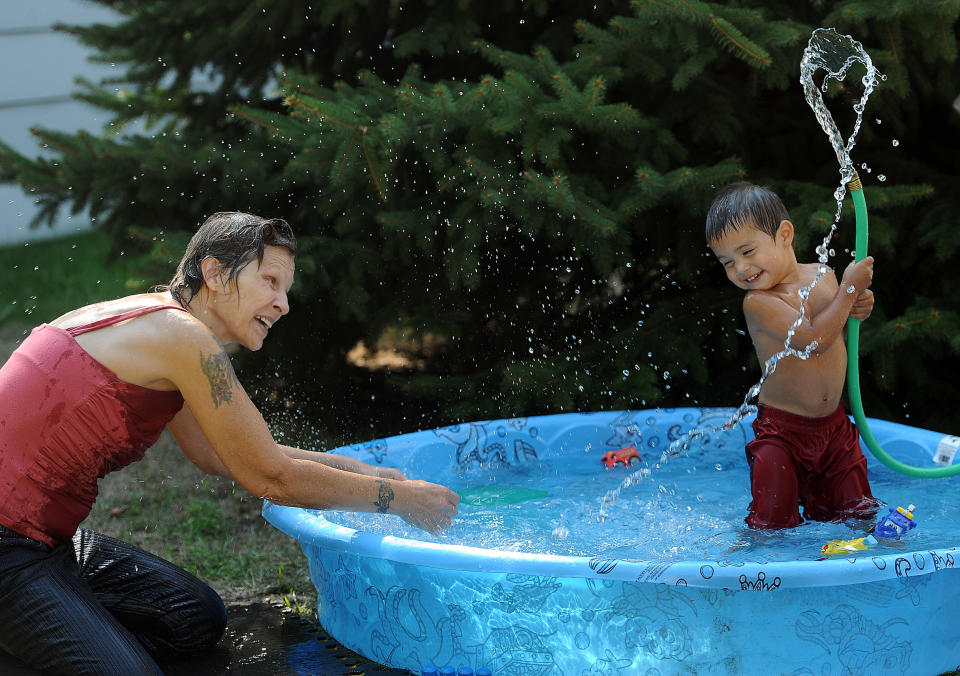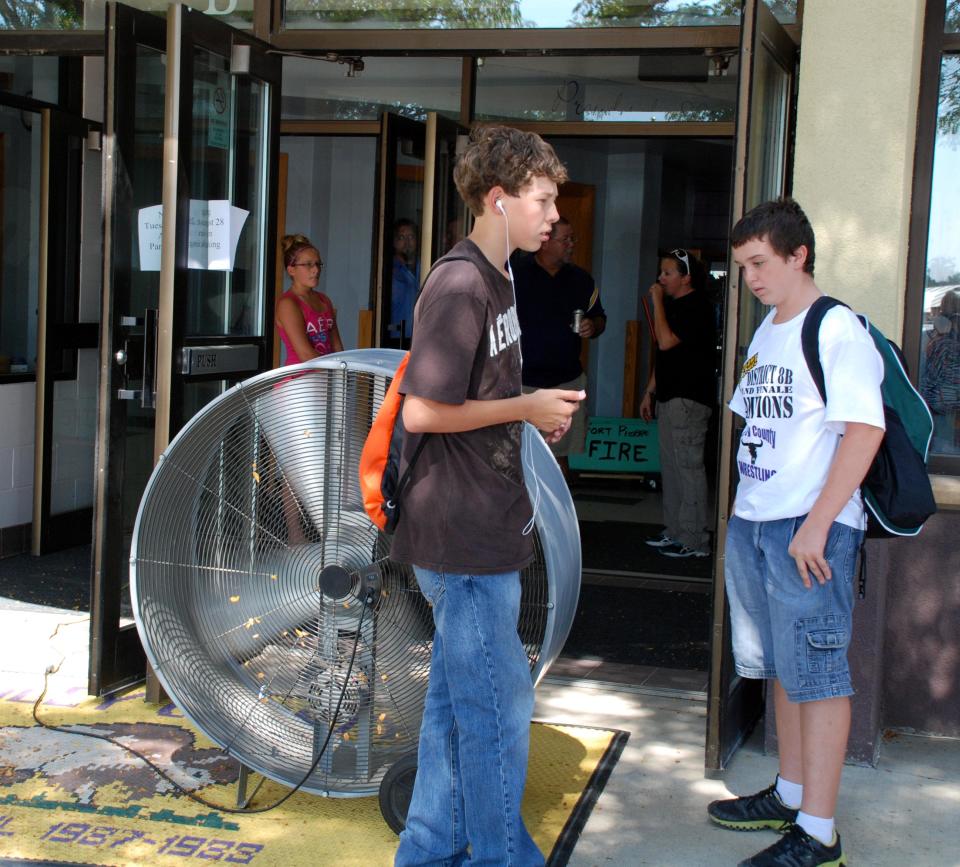Day of record-breaking heat hits the Dakotas
PIERRE, S.D. (AP) — Nature and the federal government are offering some relief Thursday a day after record-breaking temperatures struck the Dakotas amid an enduring drought.
More than a dozen cities in the two states set high-temperature records on Wednesday. The South Dakota capital of Pierre hit 110 degrees, and many other cities, including Rapid City and Sioux Falls, surpassed 100 degrees, according to National Weather Service. Slightly cooler temperatures were forecast Thursday.
Sioux Falls implemented once-per-week watering restrictions for the first time since 2003 because months of drought have reduced the flow in the Big Sioux River, according to the Argus Leader newspaper. Precipitation in South Dakota's largest city is more than 5 inches below normal this year.
Many cities in North Dakota also had triple-digit temperatures Wednesday. Grand Forks County issued a burn ban because of high fire danger. The western part of the state, where crews have been battling wildfires, also remains dry.
"To be in the 100s this late in the year is so rare," Bryan Henry, fire meteorologist with the Northern Rockies Coordination Center, told The Bismarck Tribune.
Harlyn Wetzel, a weather service meteorologist in the North Dakota capital of Bismarck, told The Associated Press that the dry conditions are a factor in the hot weather.
"When we don't have much moisture in the air we heat up faster," he said.
Forecasts called for slightly cooler temperatures Thursday because of what Wetzel described as "a weak cold front," with some parts of the two states seeing high temperatures dropping back down into the 70s and 80s.
The cooler weather arrived just in time for the start of the South Dakota State Fair, which began its five-day run in Huron on Thursday. Officials told KOKK radio they were hoping to see attendance hit 200,000, after 191,000 people took in last year's fair.
High temperatures in the 90s were expected to linger through the weekend but storms were not expected to be much of a problem, said Kyle Weisser, a weather service meteorologist in Sioux Falls.
"Thunderstorms this time of the year do tend to be the late-afternoon variety which tend to come and go in about an hour, or the overnight variety which don't tend to affect the fair quite so much," he said. "And with the hot, dry air out there this year, any storms that could even get going will be very isolated at best."
The lack of rainfall this summer has plunged much of the two states into drought. The federal Agriculture Department on Wednesday announced more relief for farmers and ranchers.
Agriculture Secretary Tom Vilsack approved a two-month extension for emergency grazing on Conservation Reserve Program land. He also designated 21 South Dakota counties as primary natural disaster areas, which also affects six contiguous counties in North Dakota. Producers in those counties might qualify for low-interest emergency loans.
The CRP grazing extension means ranchers can graze their cattle on CRP land that normally is idled through November rather than through September. The extension does not apply to emergency haying of CRP land.


